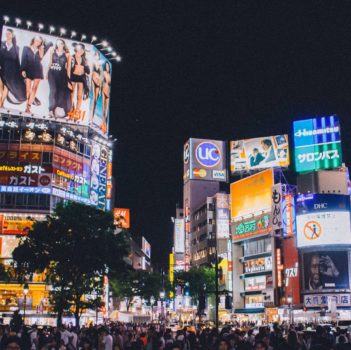DOOH Advertising Now Accessible to SMB Advertisers: Q&A with Matthew Olivieri, AdSemble
by on 24th Apr 2017 in News

Digital out-of-home (DOOH) advertising has been giving new life to older, more conventional out-of-home advertising mediums; and advertisers of all sizes want to reach their customers through this channel as it evolves. ExchangeWire speak with Matthew Olivieri (pictured below), CEO, AdSemble on how SMB advertisers can take advantage of the same available inventory used traditionally by large advertisers.
ExchangeWire: As billboards have been turning digital, what has been the response from SMB advertisers to take advantage of the DOOH market?
Matthew Olivieri: There is a lot of excitement, optimism, and curiosity from SMB around digital billboards. This has led to an increase in demand for price quotes, as well as a greater understanding how advertising is measured, what constitutes an 'impression' and how they can include DOOH advertising into their marketing mix. Learning about how digital billboards rotate messaging, and how this yields many spots to sell, which in turn yields a lot of inventory that can be purchased below market rates, is especially interesting to the SMB market.
How are campaigns built and targeted with DOOH? How can advertisers measure the effectiveness of DOOH campaigns?
Campaigns are built and targeted with DOOH by first determining the market you would like (NYC, LA, CHI, SF Bay area, etc). Next, you would decide what your budget will be for a given amount of time (ex. USD$500-$1000 per week for 12 weeks). Then you would need to understand your messaging as it connects to your audience, as well as any online efforts you are pursuing. Finally, you will launch your campaign across all the various DOOH products in the markets you selected and gauge audience response by means of anything you notice during the course of your campaign. This could include, but is not limited to: increased web traffic as audited by Google Analytics, increased phone calls/emails, competitors seeing your message, and more.
What are the benefits for advertisers using AdSemble’s Open Display platform for DOOH advertising buys?
The benefits for advertisers, especially SMB, is that Open Display specifically leverages unsold inventory to be filled at the lowest possible rates. In other words, a local pizzeria, chiropractor, or car dealership can select a local market of interest, input a budget and upload an ad – Open Display will handle the rest – and spread this ad (and their budget) across as many DOOH screens as possible, all within their desired date range. In addition to being able to immediately see proof-of-play photos of their ad on screen venue(s) our system has selected, advertisers can come back to their dashboard and run reports to show detailed analytics on the number of plays and impressions for their campaign across all locations, and if there was a variance in what was estimated versus what was actually delivered, in terms of plays and impressions.
On what various mediums can ads be displayed? What is the most popular?
Mediums include: digital billboards, mall screens, fuel-top screens, sports jumbotrons, elevator screens, movie theater screens, convenience store screens, and public transportation screens. The most popular by far are the highway digital billboards.
How does Open Display give SMB advertisers the ability to play in the same market as larger advertisers?

Matthew Olivieri, CEO, AdSemble
Open Display gives SMB advertisers the ability to play in the same market as larger advertisers because it allows them to upload their ad and have it play, at scale, across multiple screen locations. This was previously only accessible to larger advertisers utilising agencies that had the time to piece together large network buys. Additionally, because the Open Display platform is leveraging the unsold space, these SMB advertisers are able to come in at a price point that fits their budgets so they can better control their costs.
How is billboard ownership structured and how does that affect purchasing and implementation in different markets?
Billboard ownership is typically structured by a company acquiring the permitting necessary, and purchasing the materials and LED screens needed to construct a sign. In larger companies, this is done at scale allowing them to install many signs in large geographic areas, or even across the entire country. The companies then sell the advertising space direct, or partner with a company like AdSemble to assist in securing advertising 'media buys'.
What are the bigger DOOH trends you’re seeing? How do you see AI influencing the future of DOOH?
The bigger DOOH trends we are seeing is the desire from advertisers of all sizes to better understand who is seeing their messaging, how that can be connected to sales/revenue, and how can that information be used to create better messaging. Programmatic is also in the conversation, but I believe we are still very early days on that. AI will definitely play into the programmatic conversation. The use-case everyone loves to quote is the famous scene in Tom Cruise's film Minority Report when he walks in front of a digital screen and the GAP store already knows his pant size and suggests the latest style for him to try on. I do believe in the future this will be a reality, whether we are five years out or sooner from seeing this will remain to be seen.








Follow ExchangeWire